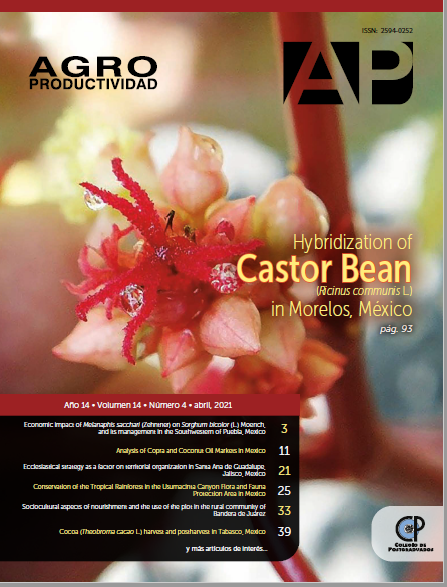Economic impact of Melanaphis sacchari (Zehntner) ON Sorghum bicolor (L) Moench, and its management in the southwestern of Puebla, Mexico
Main Article Content
Keywords
Pest management, injuries, profitability, Pest management, Injuries, Profitability
Abstract
ABSTRACT
Objective: To evaluate the economic impact of the sorghum aphid (Melanaphis sacchari) and the sorghum crop profitability in Western Puebla, Mexico. Considering the management practices application-index (IAPM), related to the control practices suggested by the State Plant Health Committee (CESAVEG) was obtained.
Design/methodology/approximation: Data on socioeconomic aspects of the producer and the production units were collected. The questionnaire was applied to producers affilliated to PROAGRO. Results are shown using descriptive statistics.
Results: The aphid infestation in sorghum had its most relevant effect on yield during 2014-2016. Income obtained from sorghum sales is decreasing due to a downward trend in the purchase price per ton. After the arrival of M. sacchari the primary control strategy was to increase the number of insecticide applications, increasing production costs.
Limitations of the study/implications: Since producers' incomes do not depend solely on sorghum production, the effect of the pest on their economy was relatively minor.
Findings/conclusions: The management practices application index indicates a moderate use of the recommended practices to manage this pest. The B/C ratio suggests that even after the establishment of M. sacchari, sorghum is still a profitable activity.

